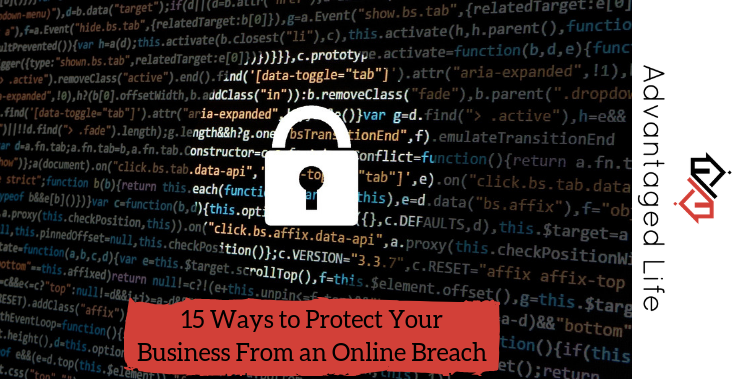There’s nothing worse in my book. You’ve worked hard, rendered your high-quality services to a client, and now it’s time to get paid. But your client is dragging their heels, days turn into weeks, and soon you’re no longer receiving responses to calls or emails.
Having to chase unpaid invoices is something I hate. And I’m sure you do too. What’s terrible is that paying late has now become customary, especially in the UK. Small and medium-sized businesses are chasing £50 billion in late payments every year, and the average debt owed is £8,500.
Whether you’re a freelancer like me or a full-blown family-run business with employees, overdue invoices have sadly become a part of doing business.
But fear not, if you are having trouble receiving payment from a client, there are certain steps you can take to chase that unpaid invoice and get the money you’re owed.
So, without further ado, let’s give you some tips on how to chase unpaid invoices efficiently and professionally.
Be Upfront and Clear About Your Payment Terms and Expectations at the Outset
The best way to avoid chasing payments is to be upfront and clear about your payment terms and expectations from the start. That way, your client can never claim they weren’t aware of when or how they were supposed to pay.
When you’re drawing up a contract or proposal for work, make sure your payment terms are stated in black and white. I recommend setting out the following:
– When payment is due (e.g. upon completion of work, or within 30 days of the invoice date)
– How you expect to be paid (e.g. by bank transfer, cheque, or PayPal)
– Any late payment fees that will be incurred
If you’re a freelancer working on a one-off project, you can include your payment terms in an email to the client before work commences.
For example:
“Hi (client name),
Thank you for commissioning me to (project name). I’m really looking forward to working with you.
Just so we’re clear on the logistics, I wanted to let you know that my payment terms are as follows:
– Payment is due within 30 days of the invoice date
– I accept payment by bank transfer, cheque, or PayPal
– If payment is not received within 30 days, a late payment fee of (x%) will be incurred
If you have any questions, please don’t hesitate to let me know.
Best,
(Your name)”
By being upfront about your payment terms, you can avoid any awkwardness or confusion further down the line. And if a client does try to dispute your invoice, you have evidence to back up your case.
Keep Detailed Records and Issue Invoices Promptly
If you want to be taken seriously as a business, it’s important to keep detailed records and issue prompt invoices.
When a project is completed, or you’ve provided a service, send an invoice to your client right away. Include all the relevant information such as:
– Your name and contact details
– Your client’s name and contact details
– An itemised list of services provided/work completed
– The total amount due
– The date payment is due
– Your preferred method of payment
If you’re working with a larger company, they may have specific invoice requirements that need to be met. In this case, make sure you follow their guidelines to the letter.
It’s also a good idea to keep detailed records of all correspondence with your client. This includes:
– Emails
– Letters
– Notes from phone calls
– Any other relevant documentation
These records will come in handy if you ever need to chase a late payment or take legal action.
Send a Payment Reminder Before the Due Date
One of the best ways to chase an unpaid invoice is to send a payment reminder before the due date. This serves as a gentle reminder that payment is due and gives your client a chance to rectify the situation before late payment fees kick in.
Your payment reminder should be polite but firm and include all the relevant information such as the invoice number, amount due, and payment date.
It’s also a good idea to state any late payment fees that will be incurred if payment is not received by the due date.
For example:
“Hi (client name),
Just wanted to remind you that payment for invoice number (xxxx) is due on (date).
If you have any questions or need more time to arrange payment, please let me know.
Best,
(Your name)”
Sending a message like this is probably a bit formal if you’re working with someone one-on-one, but I’ve found this tactic works really well with small-to-medium-sized businesses with proper accounts departments.
It’s best to send your payment reminder a few days before the due date, giving your client an extended period to respond if they need more time. If you don’t hear back from them after sending a payment reminder, it’s time to take things up a notch.
Never Be Afraid to Gently and Politely Chase via Email
Some business owners feel guilty or embarrassed about asking a client for money that is rightfully theirs. But trust me when I say you shouldn’t feel this way.
You’ve provided a quality service or product, and now it’s time to receive payment for your work. So never be afraid to chase an unpaid invoice in a polite and professional manner, especially if it’s overdue.
Of course, you don’t want to come across as confrontational, rude, or unprofessional. But you also don’t want to let the client off the hook by being too understanding and accommodating.
An excellent way to chase an invoice is by sending a simple email gently reminding them that the payment is overdue and politely asking when they plan on making the outstanding payment.
For example:
“Hi (client name),
I hope you’re well. Just wanted to check in to see when you plan on making the payment for invoice number (xxxx).
If you need more time, please let me know so we can work out a payment plan.
Best,
(Your name)”
Call and Put Them on the Spot

If you haven’t received a reply to your email, the next step is to telephone your client (or their accounts department if they have one) to chase the payment.
This can be a bit daunting, but it’s often the most effective way to chase an unpaid invoice. It also puts them on the spot and makes it harder for them to ignore you or make excuses.
When calling, be polite, firm, and to the point. Again, state the invoice number and amount outstanding, and politely ask when they plan on making the payment.
If you’re put through to their voicemail, leave a clear and concise message asking them to call you back as soon as possible to discuss payment of the outstanding invoice.
You can also send a follow-up email after the call to reiterate what was discussed and maintain a record of your correspondence in writing.
Put The Client “On Stop”
Putting a client “on stop” is one way to increase the urgency of payment of an outstanding invoice. This means that you stop providing goods or services to the client until the debt is paid. If they need your services on a regular basis, this can be a very effective way to chase payment of an overdue invoice.
Of course, you don’t want to do this with all clients as it could damage your relationship (and future business prospects) with them. But if you have a client who chronically pays late or consistently ignores your attempts to chase payment, this can be an excellent way to get their attention and spur them into action.
Some businesses don’t bat an eyelid at being put “on stop”, while others will be mortally offended and terminate the relationship there and then. You’ll have to use your judgement to decide whether or not this is a good option in each individual case.
I would only resort to this step if you’ve exhausted all of the above options and they are 60-90 days past due (based on 30-day net payment terms).
Give Them an Ultimatum with a Solicitor’s Letter Before Action
If you’ve tried all of the above methods and you’re still not getting anywhere, it might be time to give your client an ultimatum, as it should be clear by now whether or not they intend to pay your invoice.
If you’re confident that the client is deliberately avoiding payment, it might be time to take things up a notch and send a formal letter before action, which a solicitor will draft.
If you’ve not heard of one of these before, they’re sometimes referred to as a “letter of claim” or “letter before claim.” In short, it’s a letter sent out by your chosen solicitor to your client to let them know you are planning to take legal action against them to recover the monies owed unless the money is paid within a specific time frame.
This letter should wake your client up to the prospect of a County Court Judgement (CCJ). No company wants a CCJ on their books as it severely damages their credit rating, which in turn makes it harder for them to get loans, secure finance, bounce back from financial difficulties, or even secure new customers.
Sending a solicitor’s letter before action should be a last resort as the costs can soon add up (particularly if you have to take your client to court and they don’t pay up). Still, if you’re confident that the debt is owed and your client has no intention of paying, it might be worth considering.
Related Reading
- 6 of the Best Work Locations for Freelancers

- 15 Ways to Protect Your Business From an Online Breach

- 12 Ways To Increase Your Brand Visibility

- 6 Tips for Managing Remote Employees More Effectively

What to Do If You Still Can’t Get Paid
If you’re still getting nowhere, there are a number of things you can do if you can’t get paid.
Here are some of the most common courses of action:
– Claim interest on the unpaid debt
– Make them aware of the Late Payment of Commercial Debts (Interest) Act 1998
– Claim fixed ‘compensation’ fees for late payment under the Late Payment of Commercial Debts Regulations 2002
– Report them to a credit agency, which will damage their credit rating and make it harder for them to get loans or other types of finance in the future.
– Take them to small claims court
– Issue a statutory demand, which is a formal demand for payment of a debt and can ultimately lead to bankruptcy if the debt isn’t paid.
You should always seek professional advice before taking any of these steps, as they’re all severe measures with potentially serious repercussions.
Final Thoughts on Chasing Overdue Invoices
No one enjoys being paid late. But unfortunately, it has now become part and parcel of doing business for many of us.
The good news is that there are many things you can do to chase unpaid invoices and get the money you’re owed. The most important thing is staying calm, being professional, and being persistent. If you do all of these things, you should eventually get paid.
Remember, it’s a balancing act, and lucrative relationships can quickly sour. So pick your battles carefully as you don’t want to lose your best client over a solitary late payment.
And finally, make sure you have robust systems and processes in place to chase overdue invoices as quickly and efficiently as possible. Those procedures will not only help you get paid quicker, but they will also help you avoid the stress and frustration that comes with chasing unpaid invoices.
What are your experiences with not getting paid on time? How far down the list of options did you have to go to get your money? Let me know your experiences in the comments below!
